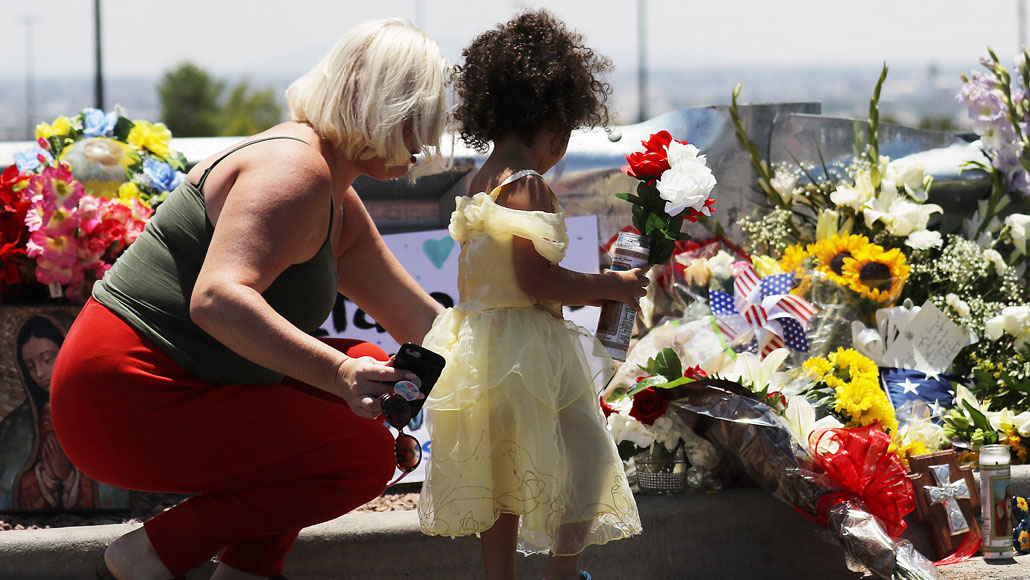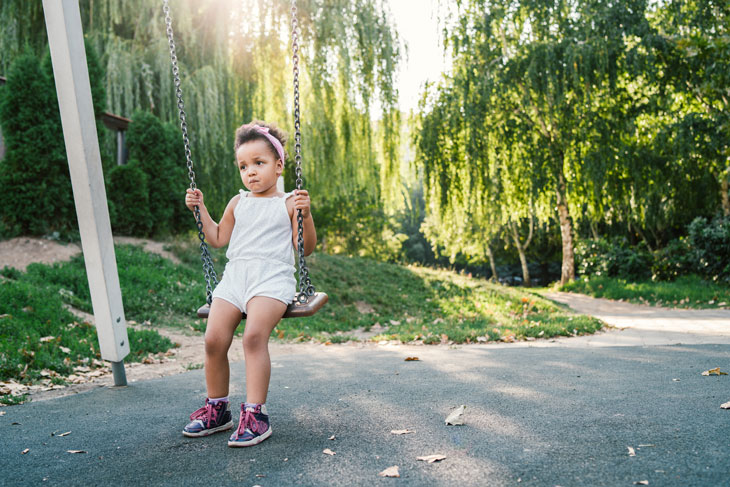Racist words and acts, like the El Paso shooting, harm children’s health
U.S. pediatricians are tackling racism as a public health issue that can take a lifelong toll

AFTERMATH A young girl leaves flowers near the site of the Aug. 3 El Paso, Texas, mass shooting that left at least 22 people dead, including a teenager and two young adults. The alleged gunman was reportedly motivated by racism.
Mario Tama/Getty Images
- More than 2 years ago
Just days before 22 people were killed in El Paso, Texas, allegedly by an anti-immigrant gunman, the American Academy of Pediatrics warned that racism was harming children’s overall health.
Among the people fleeing the shooting at a Walmart on August 3 were young families with children shopping for back-to-school supplies. “Two young parents who sacrificed themselves to shield their 2-month-old infant … were within the age group of young people I serve,” says pediatrician and adolescent medicine specialist Maria Trent of Johns Hopkins University School of Medicine, who sees patients up to age 25.
The shooting, she says, highlighted two key risks to children’s health and well-being in the United States: gun violence and racism.
“Older children and adolescents around the country hear the news, listen to adults talking and see this on their social media feeds,” says Trent, who coauthored the Academy’s new policy statement. “They need grown-ups to be able to assure them that they are safe — and to know that it’s actually the truth.”
The stress of being targeted by, or even just witnessing, racist words and actions can take a lifelong toll on children and adolescents, the Academy warned on July 29 in a statement that marked the end of a decade-long deliberation on the issue. “The evidence to support the continued negative impact of racism on health and well-being … is clear,” Trent and her colleagues write.
This is the first time the Academy has explicitly focused on racism. Trent spoke with Science News about the statement, and how pediatricians can respond. Her answers have been edited for length and clarity.
SN: How does racism affect children and adolescents?
Trent: Racism is harmful to a child’s health starting from the time that they are born. It affects their development, their mental health, their physical health in profound ways.
[For] African American women in the United States, one’s lifetime experience of perceived racism is associated with the birth weight of their children. It can lead to poor maternal health that impacts their pregnancy, can lead to preterm labor and then can also lead to low birth weight in their infants.
In adolescence, in order for young people to thrive, they have to have a healthy sense of who they are, and that includes ethnic identity. [In] young adulthood, we see the cardiovascular, metabolic and mental health outcomes [for] individuals who report experiencing racist events over their lifetime.
People who witness those sorts of terrible acts … it could be a kid on the playground who watches a kid consistently called a derogatory name … when [bystanders] are asked as young adults to recall those events, they have the kind of response physiologically similar to first responders in a humanitarian crisis, like an earthquake.

SN: What does racism do to a young person’s body?
Trent: If you have an experience that is stressful, you can see a fight-or-flight response (SN: 3/7/15, p. 18). The problem with racism is that, oftentimes, people experience that over and over again, so they never have a chance to recover. They always have to be vigilant about their environments.
Children can be exposed to racism in their everyday interactions with people, [and in] how they interact with the institutions that they depend on, like their health care environment or their school.
Fear and stress, particularly if it’s prolonged, leads to toxic stress. People exposed to that serious early stress are at risk for heart disease, diabetes and depressive symptoms.
SN: What can pediatricians do to help?
Trent: We recommend that pediatricians self-assess, understand what our biases are and [be] able to manage them. We have to figure out what to do in our practices to make sure that we are delivering culturally and linguistically appropriate services to our patients. We have to train our staff [and] set expectations for how we will treat every patient that walks through the door.
The community expects us to be leaders around child health. One of the people at our own practice at Hopkins [has] talked about how police engage young people and why adolescents are different (SN: 8/3/19, p. 4). It’s not about why kids of color are different … it’s about why adolescents are different. The officers began to realize [that the reason] young people responded to them the way they did was mostly the phase of development that they’re in.
SN: What are some ways you’ve addressed racism in your practice?
Trent: Tattoos are common in adolescence now, and I find that in our community they tell stories. When I’m examining someone [I say], “So tell me about these, what do these mean?” They often tell trauma stories, evidence of loss. The thing I love the most is the opportunity to just listen to young people, and then help them mobilize the resources around them that they need in order to move forward.
The biggest thing is to just listen. What [is] the outcome that young people want for themselves? [We] talk about the things they can and can’t control and about how they can manage themselves in those scenarios.
SN: What does the Academy’s policy mean for medicine?
Trent: This policy is not in response to any current event, but to the activities in our country over time. Racism is a socially transmitted disease. We pass it on to our children. We’re hoping that grown-ups, not just pediatricians, think about how their perspective, their speech, their behavior affects their children.
Unequal access [to resources] is a part of the reason we see the kinds of scenarios we see. Every child should have a safe neighborhood to live in. Every child should have housing in a lead-free environment, that’s free of violence. Every child should have clean water. Young people should not have to be in places where they don’t have access to a bed or a shower or healthy food, or incarcerated just because they’re seeking safe spaces in the United States.
SN: What can be done more immediately in the wake of the El Paso shooting?
Trent: As pediatricians, we will be there to help families with these discussions and both the direct and indirect trauma that these events have caused. We will also continue our advocacy efforts to encourage our government leaders to adopt policies that broadly address gun violence and change the climate of racism impacting children, adolescents and families.







